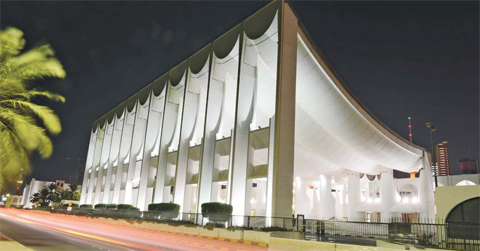BANGKOK: Major airport expansion projects are taking off across Thailand, Cambodia and Vietnam, and a new airline is set to launch next year—all banking on an expected boom in air travel in Southeast Asia, fuelled by Chinese and Indian tourists. But there are doubts about whether it will materialize in an uncertain economic environment and as worries about the impact of travel on climate change deepen.
Thailand’s Really Cool Airlines is expected to start flying between Bangkok and Japan around mid-2024, but CEO Patee Sarasin—a veteran of the region’s cutthroat budget sector—says it has been a battle to launch a new carrier just after a pandemic. “It’s a lot of money. It has been quite gruelling to raise the funds,” he told AFP. “There are some points (where you say) ‘why am I doing this?’ It crossed my mind many, many times.”
Patee ran budget carrier Nok Air for more than a decade, but while he is coy about the finer details of the new venture, he claims it may yet “change the aviation paradigm”. He added: “Southeast Asia is going to be probably one of the centers of the universe in the future, with the slowdown in Europe, and in the US.” Flying took a hammering globally during the pandemic as international travel all but shut down, but the industry is bullish about its bounceback, evidenced by a flurry of big-ticket orders at this month’s Dubai Air Show and bumper profit jumps for the likes of Air France-KLM and Ryanair. Southeast Asia is becoming a hot property, with private and public players competing for an expanding market. The region currently accounts for 10 percent of global traffic—more than 500 million passengers in 2019. And Boeing expects this figure to grow around 9.5 percent a year over the next two decades, well above the global average of 6.1 percent.
Across the region from Bangkok to Hanoi, governments are splashing billions of dollars to update and expand airport infrastructure. A new terminal opened at Suvarnabhumi, Bangkok’s main international airport, in September, and a third runway is being built. There are plans for a third terminal at the city’s other airport, Don Mueang, as well as a doubling of capacity at Chiang Mai in the north, and expansion in the major island tourism hub Phuket. Cambodia has grand plans to make Phnom Penh’s new $1.5 billion airport, expected in 2025, a regional hub to compete with Bangkok and Singapore, with about 50 million passengers by 2050.—AFP
Further evidence of the kingdom’s ambitions came earlier this month with the opening of the new Chinese-funded $1.1 billion airport at Siem Reap, the gateway to the Angkor Wat temple complex, Cambodia’s biggest tourist draw.
Built as part of Beijing’s sprawling “Belt and Road” infrastructure scheme, the Siem Reap airport is designed to handle 12 million passengers a year by 2040 -- double the total number of foreign tourists who visited the country in 2019. Philip Kao, president of a Siem Reap tourism association, hailed the new airport as a “game changer” because its longer runway means it can handle bigger planes flying long-haul. But while some are hoping for a tourism bounceback, others are grappling with the environmental impact of the construction boom.—AFP
Outside Ho Chi Minh City, work on what will be Vietnam’s biggest airport, the $15 billion Long Thanh terminal, has blanketed nearby neighborhoods in thick red dust. Tourist numbers are not yet hitting pre-pandemic highs, and Mayur Patel, Asia Director for aviation data consultancy OAG said they are unlikely to do so before late 2024 or early 2025. “It’s fragmented from an economic perspective, but there is a coordinated effort to bring tourism back. Complexities will ease out in the years to come,” he told AFP.
Thailand, where tourism accounts for around a fifth of gross domestic product, has stepped up measures in recent weeks to boost numbers by granting visas on arrival to visitors from China and India—two huge reservoirs of customers. Analysts expect growth to be powered by the growing Chinese and Indian middle classes—as well as a younger generation more keen to travel than their parents. But OAG warns the region’s tourism has sometimes been over-reliant on China, and for now Chinese visitor numbers are still way below pre-pandemic levels as the Asian superpower grapples with a challenging economic slowdown.
In Thailand’s deep south, Betong International Airport stands as a monument to misguided expansion. Opened in 2022 in a remote spot near the Malaysian border, the airport struggled for passengers, and now stands idle as airlines halted operations within a few months. – AFP











